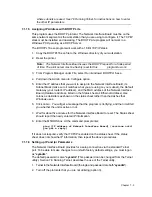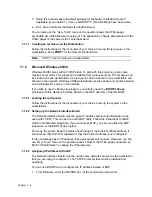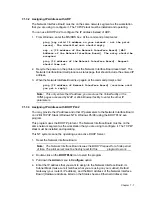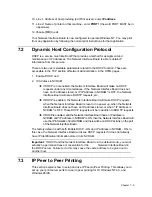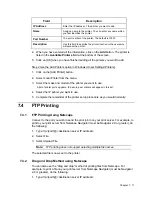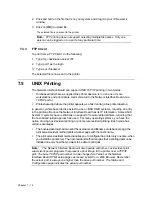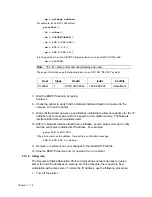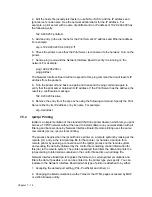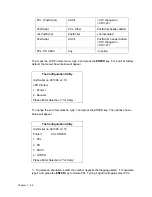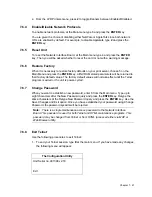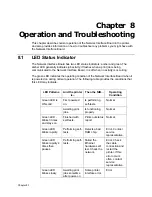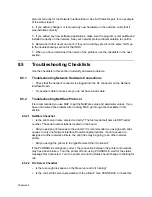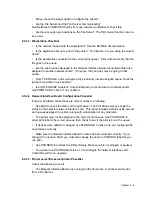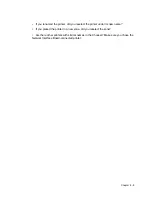
Chapter
7 - 16
4. Edit the hosts file (usually /etc/hosts) or use NIS or DIS to add the IP address and
[print server's node name. See the network administrator for the IP address. For
example, a print server with a name of printfast and an IP address of 192.9.200.200 has
the following entry:
192.9.200.200 printfast
5. Add an entry to the arp cache for the Print Server's IP address and Ethernet address.
For example:
arp -s 192.9.200.200 0:40:c8:0:0:ff
6. Check the printer to see that the Print Server is connected to the network. Turn on the
printer.
7. Send a ping command the Network Interface Board to verify it is running on the
network. For example:
ping 192.9.200.200 or
ping printfast
The Network Interface Board will not respond to this ping command but it will read its IP
address from the packets.
8. Turn the printer off and back on again and then send the ping command again to
verify that the print server obtained its IP address. If the Print Server has the address, the
result is a confirmation message:
192.9.200.200 is alive
9. Remove the entry from the arp cache using the following command. Specify the Print
Server either by its IP address or by its name. For example:
arp -d printfast
7.5.2
lpd/lpr Printing
lpd/lpr is an implementation of the standard UNIX line printer daemon which lets you print
across a TCP/IP network without the need to install software on your workstation with all
filtering and banners done by Network Interface Board. Remote printing uses the same
commands (lpr, lpq, lpc) as local printing.
The process begins when the lpr call finds a printer on a remote system by looking at the
remote (rm) entry in the /etc/printcap file for that printer. lpr handles a print job for a
remote printer by opening a connection with the lpd/lpr process on the remote system
and sending the data file (followed by the control file containing control information for
this job) to the remote system. The printer-based lpd then filters the data and prints the
job according to information contained in the control file and its own printcap file.
Network Interface Board lpd recognizes the format of a certain printer emulations and
filters the data, if possible, so it can be printed on the printer type you specify. You can
indicate to the Network Interface Board lpd what type of printer is attached to by either:
1. Accepting the default port setting (PCL, PostScript and other), or
2. Changing the listed emulations via the Telnet or the HTML pages accessed by MAP
or a Web Browser utility.
Содержание NIB 450-E
Страница 1: ...Network Interface Board NIB 450 E For Novell NetWare Apple Talk and TCP IP Networks Owner s Manual ...
Страница 3: ......
Страница 8: ......
Страница 14: ......
Страница 18: ......
Страница 40: ......
Страница 44: ......
Страница 46: ......
Страница 86: ...2 ...
Страница 106: ...Dynamic Host Configuration Protocol DHCP 22 4 ...
Страница 112: ...Windows NT Configuration 28 5 ...
Страница 118: ...34 UE USA A855 ...
Страница 119: ...Copyright 1998 ...
Страница 120: ...Network Interface Board 450 E Option Quick Configuration Guide Printed in USA UE USA A855 8500A ...


